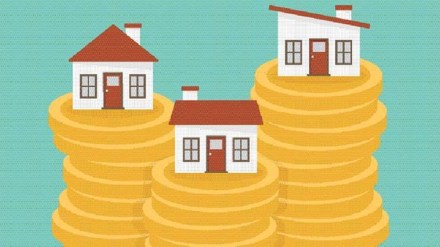A withdrawal of the credit-linked subsidy scheme, rising land prices, and a preference for mid-range, premium and luxury projects from developers has dented growth in the affordable housing segment, say experts.
Home loans rose 14.6% year-on-year in May, lower than the 16.4% y-o-y rise in August 2022, Reserve Bank of India (RBI) data showed. This is largely because demand in the affordable housing segment has waned in recent months.
Of the 229,000 units sold in the top seven Indian cities in the first half of 2023, only 20% were affordable houses, real estate consultant Anarock Research said on Sunday. This was against 31% in January-June 2022, the report said.
There are multiple factors leading to slowdown in affordable housing segment, including the credit-linked subsidies scheme and income tax benefit to developers being stopped, according to Monu Ratra, executive director and chief executive officer, IIFL Home Finance.
“Mid-segment and premium segment doing very well, and some increase in interest rate also contributed to moderation in the sector,” Ratra said.
The average ticket size in the affordable housing segment is below Rs 40 lakh. The segment typically caters to self-employed individuals, while the large ticket-size housing segment caters to salaried individuals.
While the housing segment is less susceptible to repo rate changes than large ticket-size loans, experts say that the withdrawal of the credit-linked subsidy scheme for the economically weaker segment and low-income groups has weighed on demand.
While the Pradhan Mantri Awas Yojana (Urban) was extended till December 31, 2024, the credit-linked subsidy scheme vertical was only effective till March 31, 2022. Among other benefits, the scheme provided an interest subsidy of 4% for loan amounts of up to `9 lakh.
Besides, rising land prices and higher input costs also dented the affordable housing segment.
Total new supply share in the affordable housing category across the top seven cities declined from 23% in H1 2022 to 18% in H1 2023, said Anuj Puri, chairman, Anarock Group.
“With land deals soaring across the country, the cost of this basic input for all real estate has spiralled in tandem,” Puri said. “It is becoming increasingly unviable for developers to buy land at higher prices to build low-margin mass housing.”
The lack of sound support infrastructure in distant suburbs and the absence of contemporary low-cost construction techniques have aggravated challenges in the segment, say experts.
A majority of buyers in the affordable housing segment have been postponing their purchase decisions due to rising real estate prices over the last one year, they said.
According to Anarock, of the total affordable homes sold in H1 2023 across the top seven cities, Mumbai Metropolitan Region had a 37% share, while Pune accounted for 21%, followed by Delhi NCR at 19%. At 720 units, Hyderabad sold the fewest affordable housing units, forming just 2% of the market.
Nevertheless, experts are confident that the segment will perform strongly in the long term, considering that India’s mortgage penetration is at a mere 10.5% and the need for fresh housing is prevalent.
